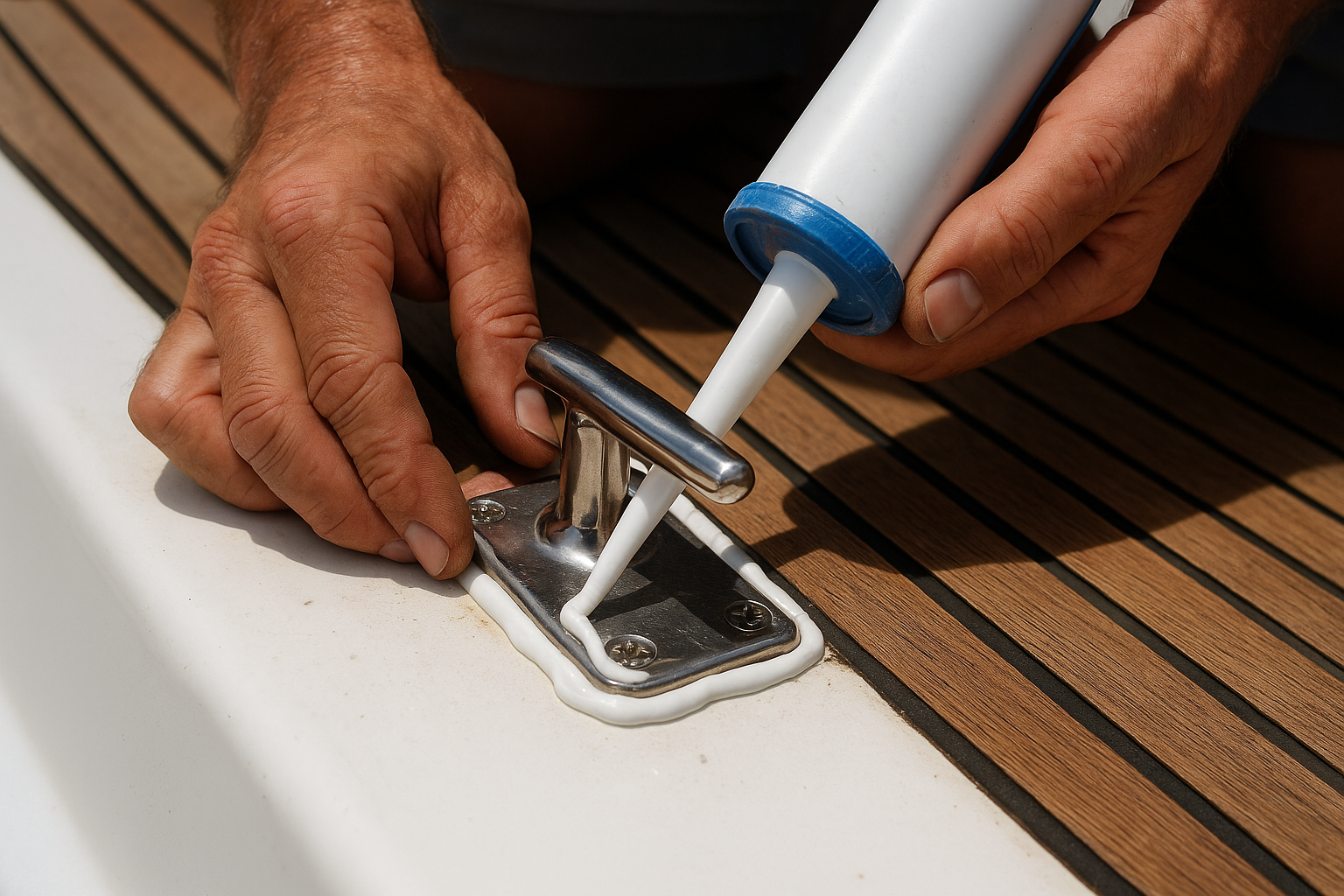Water doesn't ask for permission before it destroys your boat. It finds the weak spots, exploits every gap, and turns minor oversights into major problems.

The Silent War Below Deck
Most boat owners think they're fighting against waves and weather. The real battle happens at every mounting point, every fastener, every seemingly innocent deck fitting. These aren't just attachment points - they're potential breach points in your vessel's armor.
The math is brutal. A single poorly sealed fitting can let in gallons of water over time. That water doesn't just sit there - it works its way into core materials, breeds mold, and corrodes metal from the inside out. By the time you notice, the damage bill often runs into thousands.
The Arsenal You Need
Victory in this fight demands the right weapons. Hardware store solutions won't cut it. The marine environment is merciless, and your tools need to match its intensity.
Professional marine technicians don't improvise with their toolkit. They've learned through countless repairs what works and what fails.
- Marine-grade sealants that flex with hull movement
- Professional-grade caulking guns for precise application
- High-quality masking tape that won't leak
- Industrial cleaning solvents that strip away all contaminants
- Specialized scrapers that won't damage gelcoat
- Marine-grade fasteners rated for saltwater exposure
Breaking Down the Battle Plan
This isn't a job you rush. Each step builds on the last, and shortcuts now mean leaks later. The process demands precision, patience, and attention to detail.
The best marine technicians follow a proven sequence that leaves nothing to chance:
- Strip everything down to bare surfaces
- Clean until it passes the water break test
- Inspect and replace any compromised components
- Mask with surgical precision
- Apply sealant with calculated generosity
- Reassemble with methodical care
- Clean excess without compromising the seal
- Allow full cure time - no exceptions
The Mistakes That Sink Ships
The difference between a professional seal and an amateur job isn't just in the technique - it's in understanding what not to do. The most expensive lessons in boating often start with "I thought I could get away with..."
These are the errors that keep marine repair shops in business:
- Using automotive sealants instead of marine-grade products
- Skipping proper surface preparation
- Rushing the cure time
- Over-tightening fasteners
- Ignoring manufacturer specifications
- Mixing incompatible sealants
Beyond the Basics
True mastery isn't just about following steps - it's about understanding the why behind each action. The best marine technicians think three moves ahead, anticipating how their work will perform under real-world conditions.
They know that different fittings demand different approaches:
- High-stress points need flexible sealants
- Below-waterline fittings require redundant sealing
- Movement-prone areas need special attention
- Deck hardware needs regular inspection schedules
The Long Game Wins
A properly sealed fitting isn't just about keeping water out today - it's about maintaining structural integrity for years to come. The best work looks simple but carries the weight of experience, understanding, and foresight.
This isn't just maintenance - it's an investment in your vessel's future. Every properly sealed fitting is a victory in the endless war against water intrusion. The boats that last decades aren't the ones that got lucky - they're the ones that got the details right, every single time.
Keep Your Boat Battle-Ready
Every time we step aboard, we know the difference that expert sealing makes. If you want your boat to stay strong against the elements, let’s make sure every fitting is watertight and every detail is handled with care. Call us at 305-290-2701 or Request Boat Repair or Service—we’re ready to help you keep your boat in fighting shape for every journey ahead.






.png)